The invasion from outer space trope hasn't yet been fully formed. That would come next year, with Monster Zero. Instead, the film starts off with a 50's UFO cult in which Naoko, our woman reporter is the only non-believer. Her negative waves have prevented an anticipated communication from the stars. It's no coincidence that she is up against a group of male leaders.
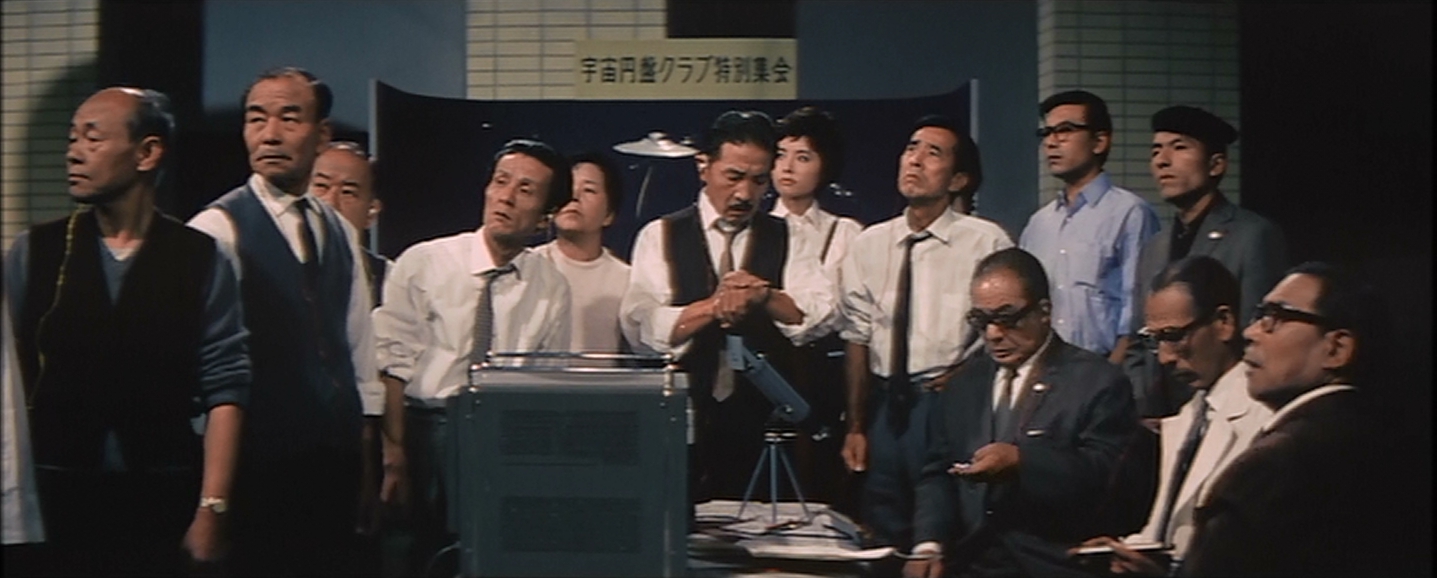
Further, Princess Salno, of Selgina, which seems like a Middle-Eastern nation, is coming to Japan, and our manly Detective Shindo is assigned to covertly keep an eye on her. This is, again, the beginning of a creeping James Bond-style spy thriller plot that will surface periodically in the franchise. After this, actress Akiko Wakbayashi would play a spy in the Bond film You Only Live Twice. Detective Shindo falls in love with her after viewing her photograph (it's not the jewelry she's dripping with in the photo, I'm sure!).
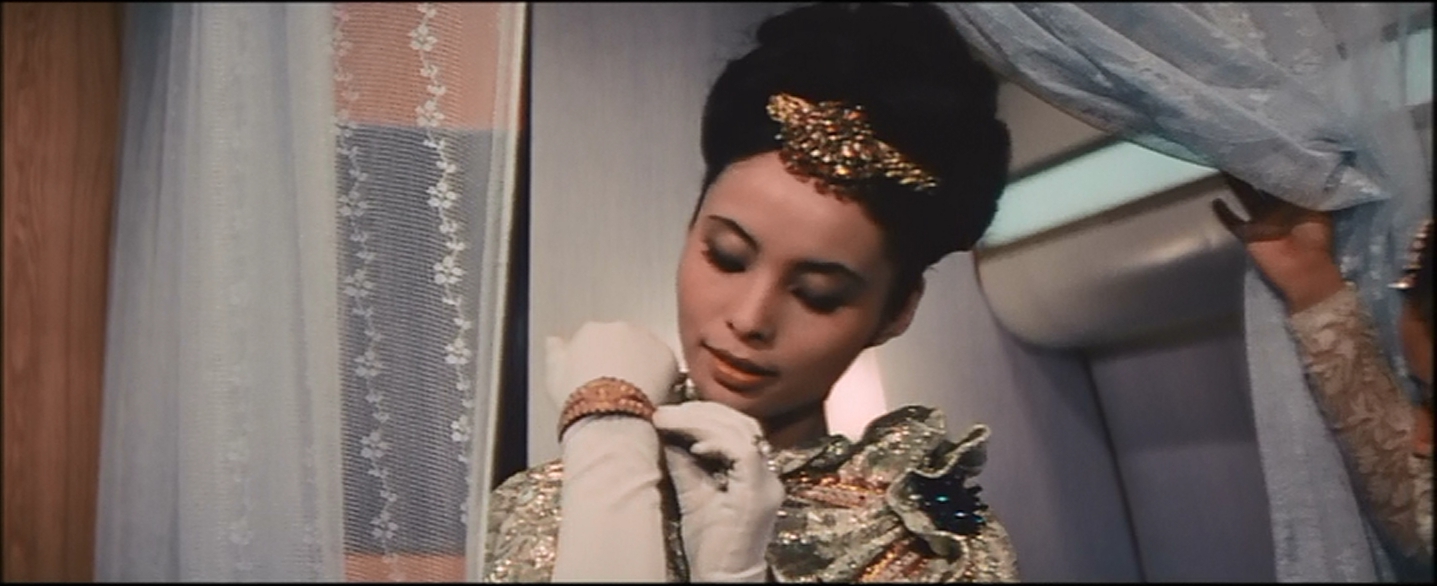
Aside from Ghidorah himself, the main antagonist is Malness, an assassin sent from politically unstable country of Selgina to kill the princess. He's a cold customer who never removes his sunglasses, and manages to be threatening, even while wearing a ridiculous white ruff in his first scene. His car gets buried under an avalanche, but he gets out and keeps on gunning for the princess. Even our detective can't lay a glove on him, but his end comes in another avalanche caused by the conflict of the giant monsters.
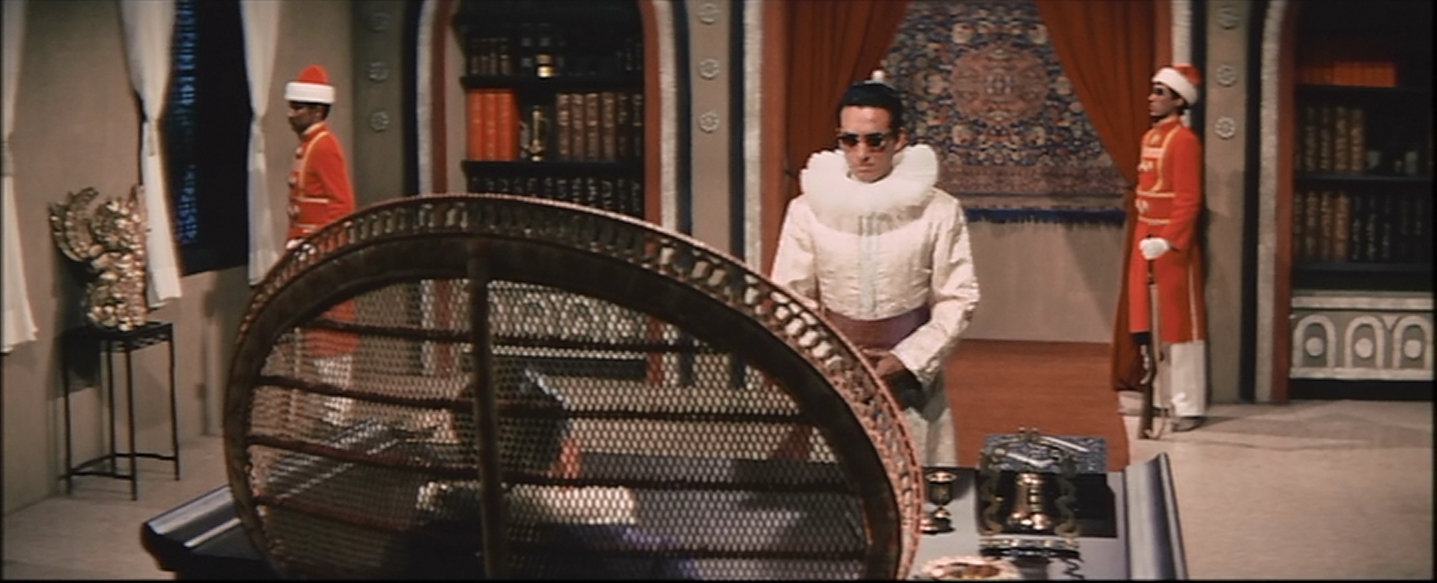
This is also the first Godzilla film with any sort of psychic phenomenon. Later, the longest-running recurring character in the franchise will be psychic Miki Sagusa from the Heisei series. In fact, Godzilla vs Biollante seems to take a lot of its tone from this film; spies, psychic powers, and fictional Middle- Eastern countries. Anyway, Princess Salmo is posessed by a Venusian consciousness, and sets out to warn the world that Ghidorah is coming, and that he will destroy the world. In the backstory, we learn that Venusians came to Earth five thousand years ago, and interbred with humans, whose descendents lost their ability to see the future.
The film also features the recently-completed Kurobe Dam, an engineering feat that remains the largest hydroelectric dam in Japan. Toho knew its monster films were being exported, so it would not surprise me if this was a deliberate moment of nationalist pride.
This film also involves Mothra, so the Shobijin fairies also make an appearance. David Kalat points out that this, the Peanuts last appearance as the Mothra fairies, is radically different from previous appearances. In the last two Mothra-related films, the Shobijin have been kidnapped. Here, they appear, by request, on a television show, and are treated with respect and deference. And a good thing, too, since Mothra is a pivotal character in Godzilla's heel-face turn. As per usual in a Mothra film, there's a brushstroke of religion, here provided by the Venusian-posessed Princess, who prays for the world to be spared. Unfortunately, as she does this, she becomes an immobile target for her assassin. Good thing Malness learned to shoot at Stormtooper school.
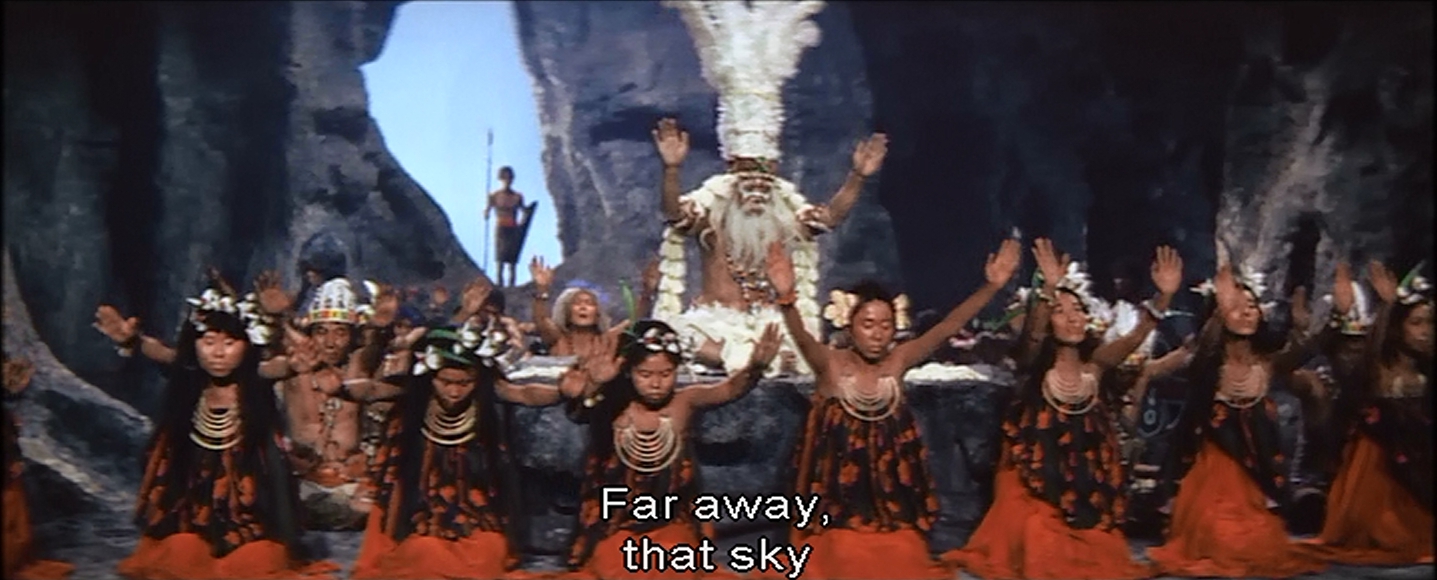
This is also Mothra's first appearance in which she does not become the giant moth version. Oddly, we don't see what happened to the other Mothra larva. The last film ended with the two larvae swimming towards Infant Isle.
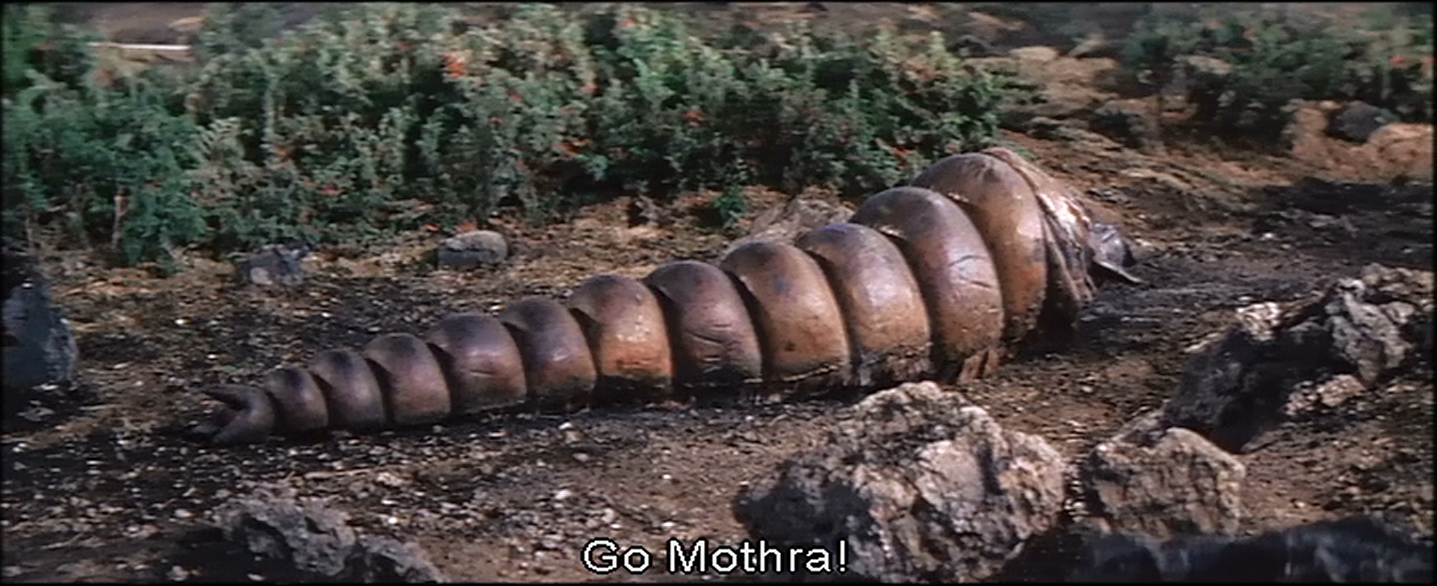
Godzilla and Rodan are humanized in this film to make them more sympathetic. Godzilla and Rodan talk with each other, and Godzilla takes a couple of shots to the groin. Seeing him take a humiliating blow like this makes the audience more sympathetic. When Mothra attempts to get the monsters' attention, she sprays each one with her silk. When Godzilla gets a facefull, Rodan yucks it up. When their roles are reversed, Godzilla has a good laugh. These point to a growing desire to make the, characters, ratehr than just rampaging plot points. Godzilla demonstrates a capacity for sympathy. When Mothra fails to convince the other monsters to fight Ghidorah, she sets off to do so alone, and gets smacked around. Godzilla and Rodan won't stand for that, so they join forces and attack.
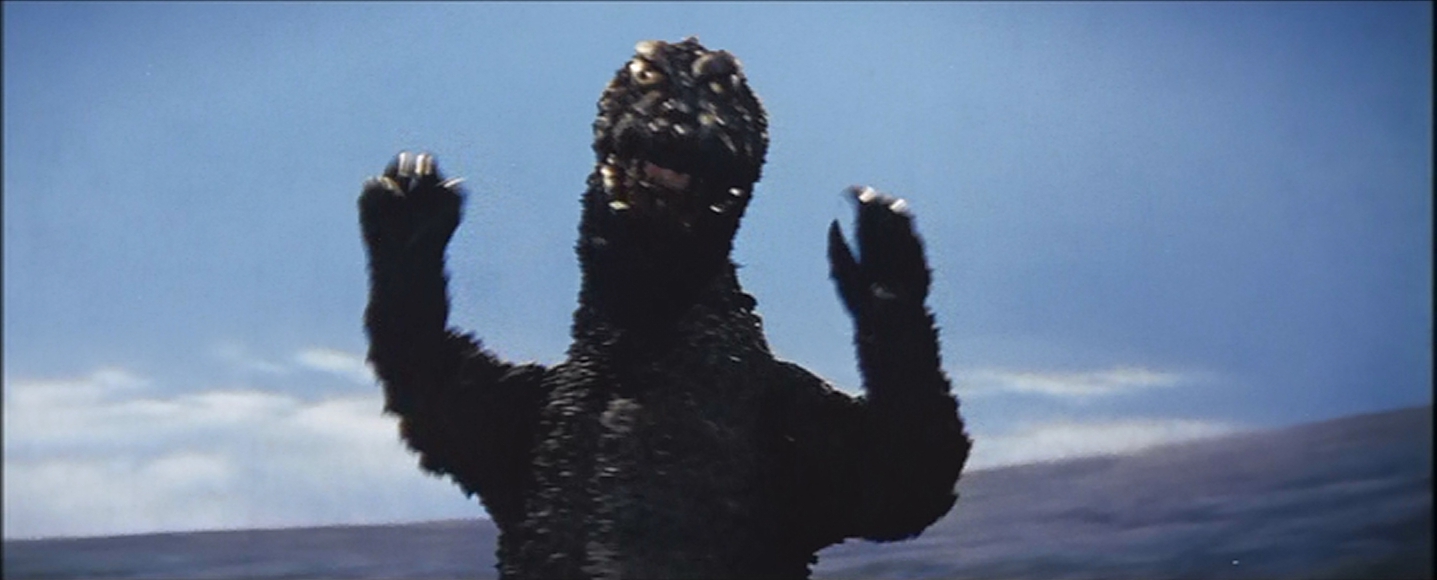
Ghidorah is thoroughly and well built up. He destroyed Venus, and now he's coming to destroy the Earth. Some of the Venusiam Princess's best lines are her prophecies of destruction. We ate treated to portentious fireworks display before the three-headed monster hatches from his meteor/egg. And although no one-really listens to the Venusian prophet, the name she gives the monster is instantly adoped by the local government. And we know Ghidorah is bad, because the very first thing he does is blow the roof off one of Japan's remaining castles! He gets a very good sequence of flying over a city, indiscriminately blasting the crap out of it. This film shows Ghidorah as an evil menace, even in a franchise filled with evil menaces.
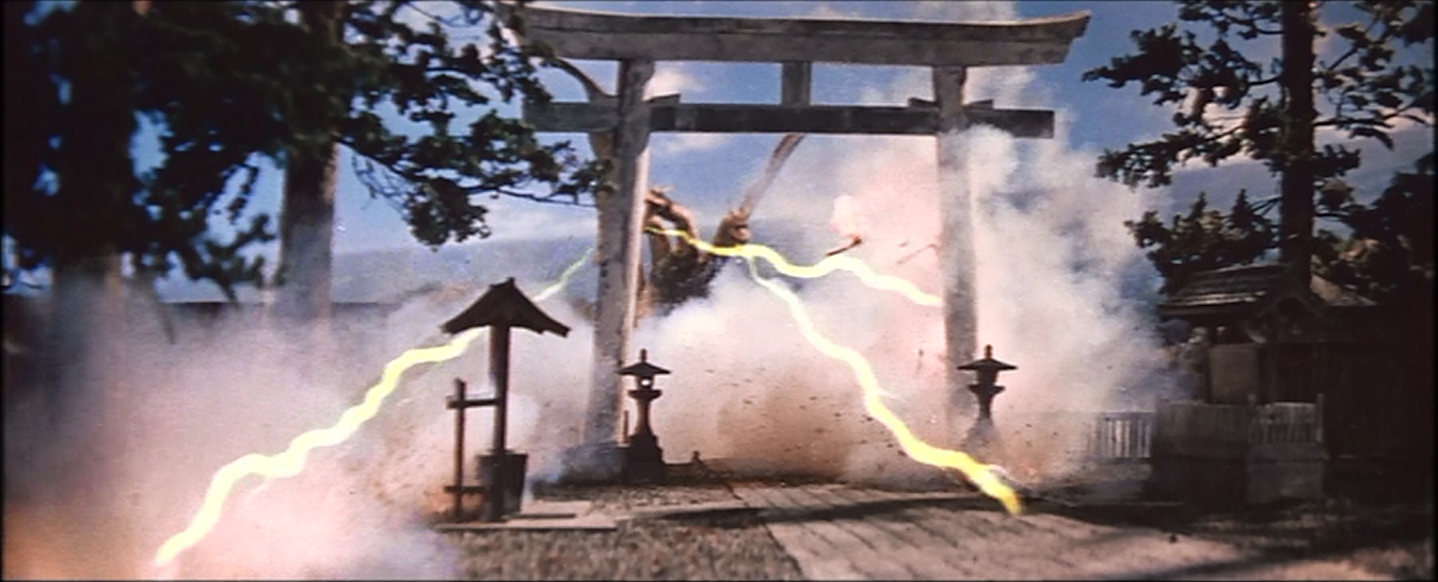
There are, as usual several different Godzillas. It seems that the suit from Godzilla vs Mothra is used when Godzilla rises out of the sea, probably because the special effects team didn't want to expose the current suit to deterioration due to submersion in water. Again, there is a long-shot with the Godzilla puppet (I've noted at least one of these scenes in King Kong vs Godzilla as well as Mothra vs Godzilla). Puppet scenes are generally have Godzilla in the far backgroud. They are easily notable because the arms move as a whole from the shoulder, something the suit has a lot of difficulty doing. This is, of course, difficult to show in a still.
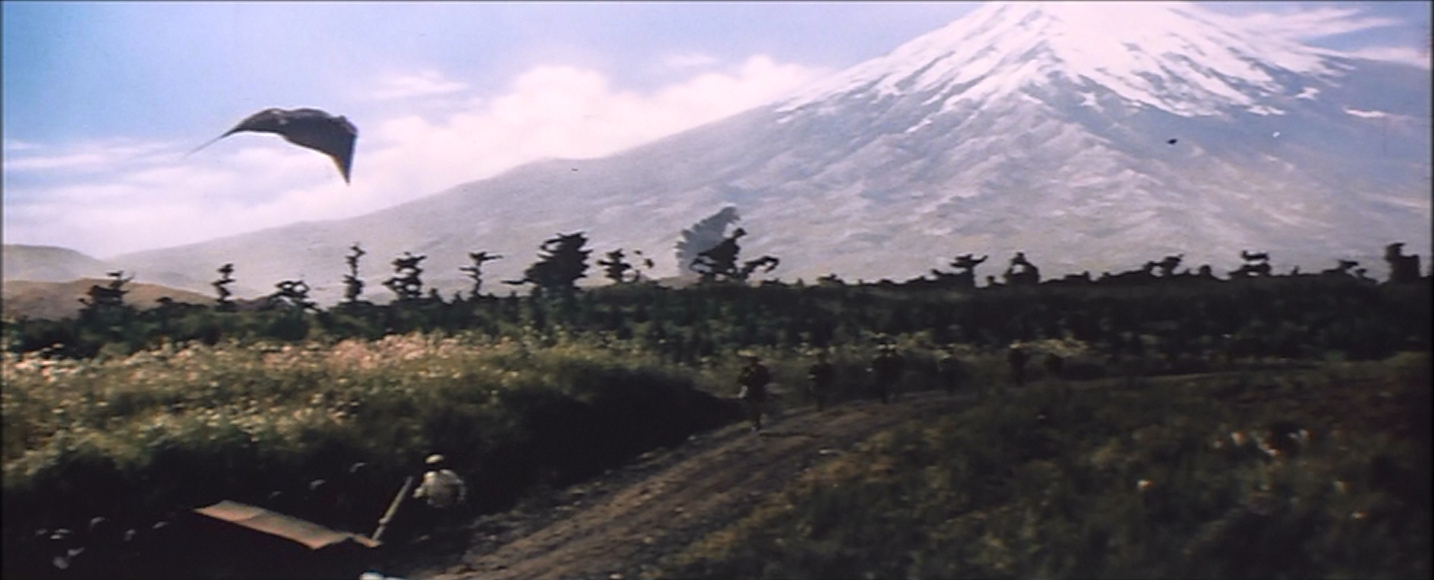
Godzilla's breath is surprisingly ineffective. And he doesn't use it against Ghidorah, only Rodan. Like Anguirus in Godzilla Raids Again Rodan just shrugs off two blasts of Godzilla's breath. It works on the puny constructions of humans, Godzilla lights a bunch of stuff on fire, but apparently, it's just not working against Rodan today.
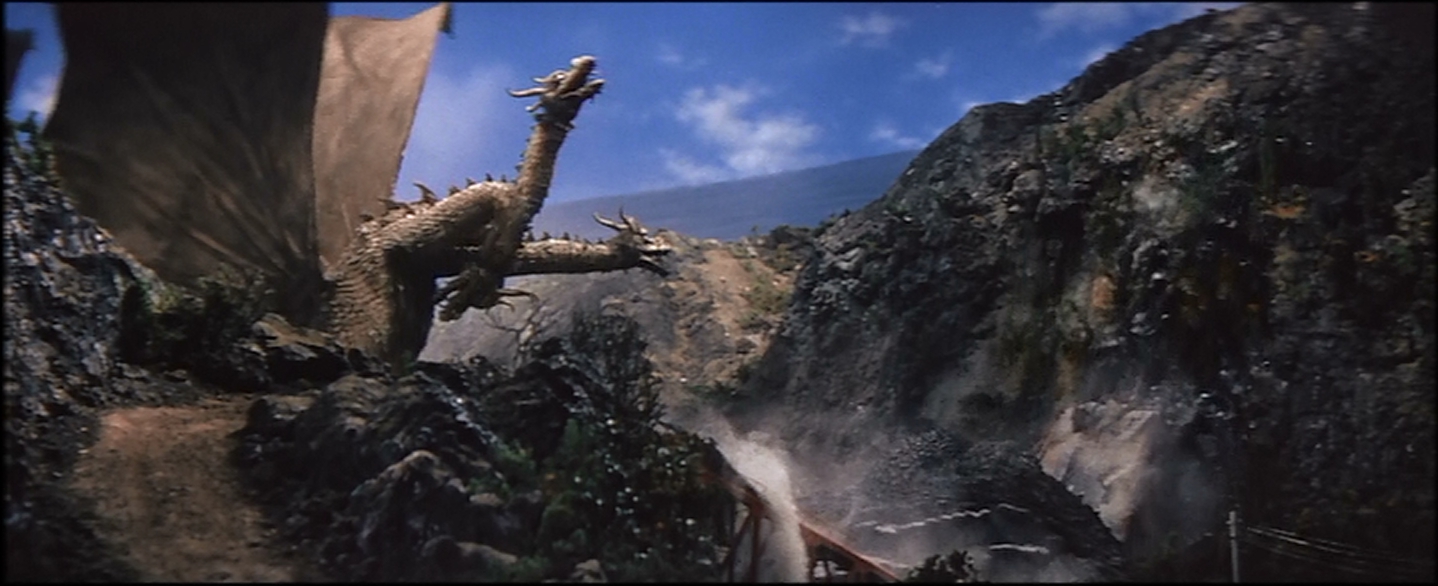
This movie has the exceptional bonus of two different monster fights. The first involves Godzilla and Rodan as antagonists, and the second has Mothra, Godzilla, and Rodan ganging up against Ghidorah. Godzilla vs Rodan is mostly played for laughs, but it's a good monster fight, despite the brief descent into rock-throwing. The real treat is the battle against Ghidorah. Even Godzilla and Rodan together can't keep Ghidorah down. Larva Mothra has to save the day with her silk.
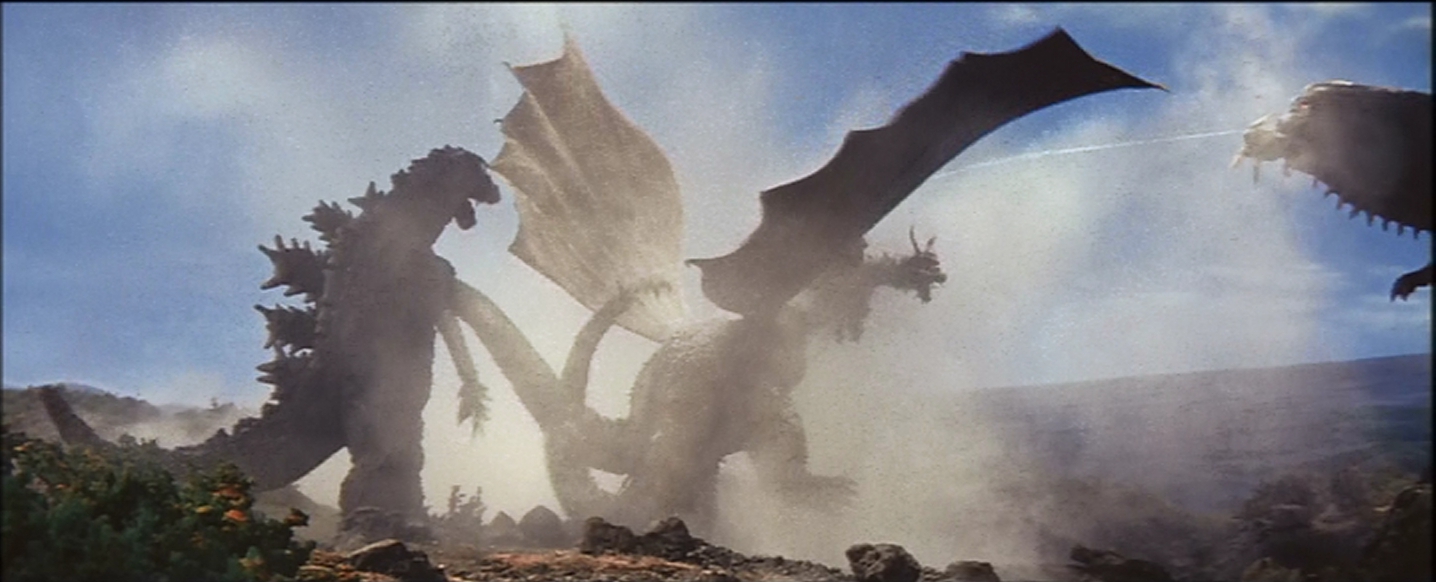
Toho, or at least director Ishiro Honda and screenwriter Shinichi Sekizawa, knew the value of a good monster. With the money flowing freely, they knew better than to kill off such a useful opponent. Ghidorah is defeated, but flies off, ready to engage our familiar monsters once more.
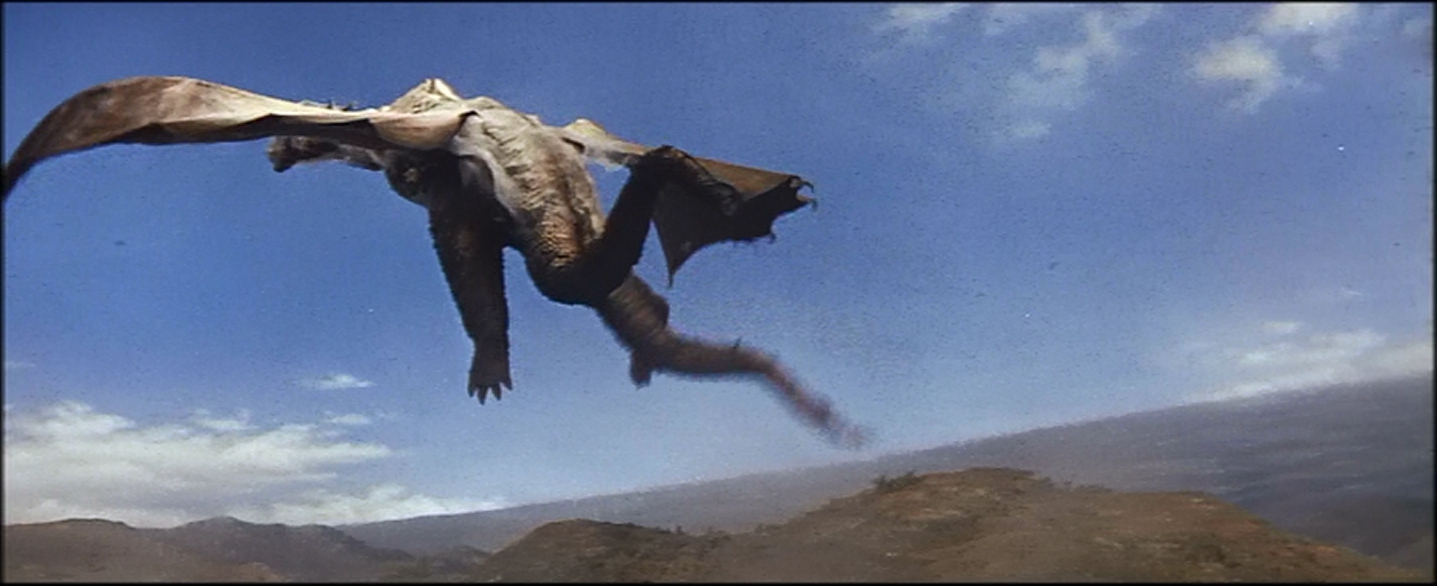
It turns out, we only have to wait a year before he turns up once more. And when we advance the clock to 1965, another studio decides to horn in on that sweet, sweet monster movie money.
No comments:
Post a Comment